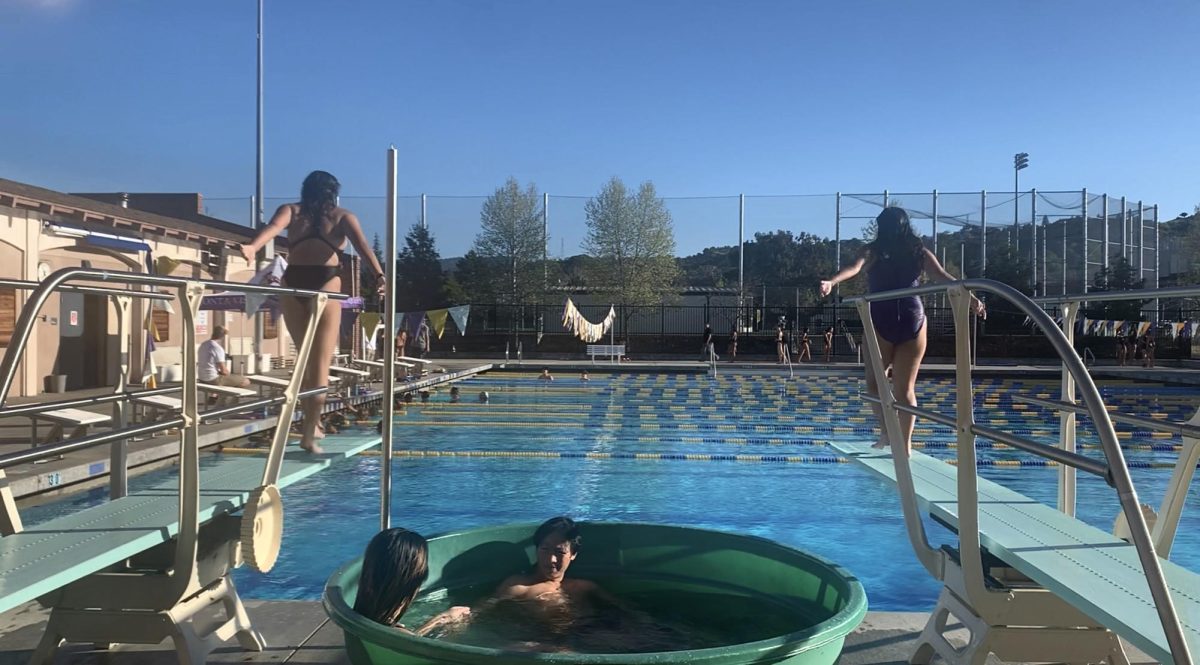Sounds of guns blazing fill the arena and abruptly stop. The crowd screams when they hear the announcer say the words: Counter Terrorists win.
These words echo through Oracle Arena as the crowd cheers louder for their favorite team. As they quiet down, the announcer yells, “Ninjas in Pyjamas are your Counter Strike IEM 2016 Champions.” The five team members dressed in black all jump up in excitement as they have just won the 430,000 dollar prize.
Senior Suchith Ullagaddi was an attendee at IEM Oakland in 2016 and has noticed the growth of esports in the last couple of years. According to ESPN, from 2012 to 2014 the number of people who watched an esport event went from 58 million to 83 million.
“It used to be the big events [which] had like 500 to 1,000 people, but nowadays the bigger esports events can fill up the entire stadium,” Ullagaddi said. “At the Oracle Arena at IEM last year, the entire stadium was filled out for both the [‘League of Legends’] and the ‘Counterstrike’ crowd, which I thought was really cool because over a long period of time, it’s grown exponentially.”
Games like “Valve’s Counter Strike: Global Offensive” and Riot Games’ “League of Legends” have moved out of basement tournaments among friends to the Oracle Arena, attracting as many fans as a Golden State Warrior’s game. Esports is now joining mainstream sports as streams are now seeing showtime on ESPN and TNT. Senior Samin Ullah commented on the changing perception of esports.
“Esports gives people the idea that games aren’t just for fun [anymore],” Ullah said.
Even colleges have joined the action with schools from the University of California Irvine to Arizona State University hosting their own esports teams. Much like traditional college players, students get scholarship money to participate in tournaments all over the country.
The success of esports parallels the successes of other major sports. These tournaments are selling giant stadiums, such as Madison Square Garden. Some of the grand-scale tournaments attract even larger audiences than traditional sporting events like the Stanley Cup Final. Prize money has soared into millions, with “Dota 2’s The International tournament having a prize pool of 24 million dollars.
“More and more corporations and NBA and soccer teams are investing in [‘Counter Strike Global Offensive’] and ‘League of Legends teams,’” Ullagaddi said. “That’s just an example of how these bigger organizations are buying into esports.”
With this new-found popularity, some have begun to aspire to become professional players, like how many dream of being a basketball or football star. Players such as Peng “Doublelift” Yiliang have had the success story that makes esports appealing. Peng dropped out of University of California Irvine in 2011 to pursue a professional career in “League of Legends.” His decision caused his parents to kick him out with only just his laptop. Six years later, he has become arguably one of the best players on the West Coast, winning more than 115,000 dollars in tournaments alone and has held a number one ranking on the “League of Legends” official ranking for North America.
In the past few years, esports have seen growth in viewership and interest, but this growth is still limited. One is the accessibility of the technology. As senior Michael Wu puts it, the area where traditional sports will always have esports beat is in accessibility.
Another issue with esports, according to Ullagaddi, is the dedication required from the audience. An esports match is much more difficult to follow as opposed to a sports game like basketball, where the concept of how to score points, for example, is simple: put the ball in the hoop. But in a popular esport like “Dota 2,” there are countless icons, spells and strategies an audience member have to understand before they can fully enjoy a match.
“If you’re watching an esport, you actually have to be dedicated,” Ullagaddi said. “You have to know how to play the game, you have to know strategy, you have to understand players [and] you have to understand teams.”
It is true that the dedication towards esports exists, according to Business Insider players practice from a minimum of 50 hours a week, and it can also be hard on players, physically and mentally. With the stress of competition and the long hours of training each day, a career in esports can be difficult.
Pro players are constantly under the spotlight by their fans, and sometimes the backlash from them can be too much. Popular North American player William ‘Meteos’ Hartman is easily recognized by “League of Legends” players as the original members of the Cloud9 roster. He was originally dubbed the North American superstar, but his performances in the 2016 World Championships failed to live up to fan expectations.
As they were knocked out of the tournament in the quarter final stage, Hartman was exposed to criticism and hate on many social media platforms. On one of his streams, Hartman mentioned he had even received death threats and had been told to kill himself.
The mental strain of tournament play has the potential to devastate an esports player’s life, beyond the stress of online abuse. The story of Cheon “Promise” Min-ki, a former player for South Korean team AHQ Gaming, is a tale wrapped in tragedy.
Cheon spent as much time as he could finding Internet cafes in order to play “League of Legends,” a game he displayed a natural aptitude for. Before long, Cheon was contacted by Noh Dae Chul, the manager for Korean “League of Legends” team AHQ Gaming, and offered a starting position within their ranks. Cheon’s maneger informed him that in order to continue playing competitively, they would have to intentionally lose to the more powerful teams — match fixing for cash, his team had purposely lost games against some of the bigger name teams for money.
Cheon had finally been pushed over the edge because of the match fixing his team did and the treatment he received from his manager. Unable to cope with his personal issues and the ordeal he’d been through with AHQ Gaming, the talented pro threw himself off of a twelve story building in a suicide attempt. He survived this fall and went on to make a recovery, aided by Riot Games themselves. But his story is still a cautionary tale for many who aspire to become professional players.
Despite this, esport players can still haul in millions in winnings and tournaments can have bigger audiences than the NBA Final. Much like the corporations of the industrial revolution and the digital companies of the dotcom era, esports is experiencing the growing pains associated with fast growth. For esports to continue its growth it’s going to have remedy its issues just as other industries have done in the past.




















